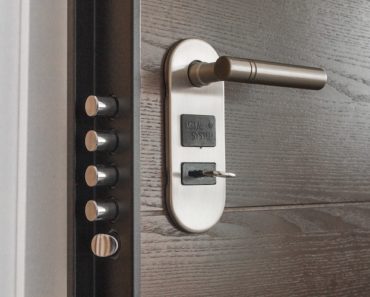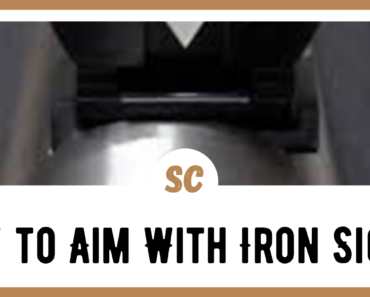There probably aren’t too many gun fans who are also movie fans that aren’t familiar with the Walther name.
Ian Fleming’s James Bond Franchise and the ensuing movies have ensured that the Walther PPK will live on in peoples memory for years to come.
The Walther PK380 follows in the footsteps of Bond’s PPK pistol with a version that has been updated yet retains a certain amount of old school style and charm.
In the traditional style, the PK380 is a hammer-fired semi-automatic pistol chambered for the .380 caliber round (9x17mm).
Walther engineers designed the PK380 as an easily concealable pistol that can be easily handled and fired by smaller persons. The PK380 is by no means a pocket pistol or a micro-pistol. However, it delivers performance and accuracy like it bigger siblings.
Don’t be misled by the traditional features and looks. The Walther PK380 is in all respects a modern fusion of these traditional design features and the latest in technological advancements in the firearm industry.
For those like me who appreciate the look and feel of more traditional pistols, the PK380 fits the bill very well.
Sizing Up the Walther PK380
For this Walther PK380 review, I want to take a look at the factory specifications first to get a grasp of the basic dimensions and operating details of this gun. Any good gun review should provide an overview of the firearm including a look at the technical specifications.
Specifications
- Caliber – .380 ACP
- Barrel Length – 3.66 inches
- Trigger Pull – 4 pounds
- Trigger Travel – .04/.2 inches
- Action: DA/SA
- Capacity – 8 rounds
- Overall Length – 6.1 inches
- Height – 5.2 inches
- Width – 1.2 inches
- Safety – Manual + 1 Auto
- Weight Empty – 17 ounces
Features and Options
Walther has an excellent understanding of the market where the PK380 thrives and the features included as well as some of the options that you can find speak to this knowledge.
- Polymer frame to manage weight effectively while providing durable and dependable pistols.
- Operates in both single action pull and double action pull
- Internal slide stop inspired by the Walther PPK
- Easy to rack slide
- Fully ambidextrous
- Paddle style magazine release
- Manual slide safety
- Sized for easy concealed carry by almost anyone
- Comes with the Walther Life Time Warranty
- Available in several finishes to add a bit of style and with a factory-installed trigger guard mounted laser sights
First Impressions
The Walther PK380 that I handled for this review was new in the box when I received it. The model was the standard all-black basic PK380.
Opening the plastic case reveals the pistol, a lock, the takedown tool, one magazine, and the documentation. Of course, the first thing to do is to grab the pistol and check out how it feels.
I must say that the Walther PK380 conforms to my hand very well. The grip is comfortable and the finger indentations seem to fall into the right places. The weight and balance make this little gun handle well.
Unfortunately, first impressions can often prove wrong so a much more in-depth look at the PK380 is in order.
The Internals Come First
The first order of business was to disassemble the Walther PK380.
I never like to take a new pistol for a test run on the range without giving it a thorough examination, cleaning, and lube of my own choosing.
I immediately found one thing that I didn’t like very much about this pistol and still see it as a shortcoming. To remove the slide, you must have the plastic takedown key that comes with the gun.
If you don’t have the key, the takedown procedure becomes much more difficult. I understand that this was done to keep the sides of the pistol smooth for concealed carry. I just don’t like needing a special tool to do a field strip and clean of a gun.
Once I figured out how to properly use the plastic takedown key, the slide came off and I was able to remove the barrel and recoil spring assembly from the slide. Nothing strange or unusual here.
The Slide
Walther states that the slide is stainless steel. With the coating on the slide, it is hard to tell exactly what material is used. I guess we will take Walther’s word that the slide is, indeed, stainless steel.
Examining the slide you will immediately notice the ambidextrous manual safety level. The lever lives at the back of the slide with the slide serrations.
This poses a bit of a problem for me since, while range testing this gun, I inadvertently put the gun on safe when reloading and racking the slide. This could definitely be a problem in some situations.
The slide is robust and solid. The edges have been relieved and the corners well rounded as you would expect on a pistol designed for concealed carry. I must admit that the Walther design negates anything on this gun that might present a snag hazard.
The Sights
Looking down the slide you find a set of standard three dot sights. There doesn’t appear to be anything extraordinary about these sights. I found them to be functional and reasonably accurate for a smaller gun.
You can change the sights on the Walther PK380 if the factory three-dot sights don’t meet you liking. However, there are no mounting options for an optical sight on the slide.
The Frame and Grip
Walther chose, like most other modern pistol manufacturers, to use a polymer material for the frame of the PK380.
This saves weight and, I am sure, saves money during the manufacturing process. I have no problem with polymer frames as long as they are properly reinforced and have metal rails for the slide.
One big factor in any pistol is the grip. The Walther PK380, unlike most hammer-fired pistols, does not have a beavertail at the top rear of the grip.
To protect the web of your hand, Walther set the grip slightly more forward which raises the bore axis a tiny bit. The grip is comfortable and the stippling is nicely done without being abrasive on the hand.
I found the trigger guard on the PK380 to be ample enough to get a gloved trigger finger into the trigger guard in the right spot. It has been my experience that many smaller concealed carry pistols don’t make enough allowance for this situation.
The frame has a short length of rail in front of the trigger guard to mount a laser or small flashlight.
The Controls
When considering the controls on the Walther PK380, there are some interesting differences and some things that I consider to be glaring omissions.
I have already talked a bit about the lack of a takedown lever or pin and the need for a special takedown tool. This is something I find troubling. Let’s look at the other controls on these guns.
The Trigger
For a small gun that operates in both single-action and double-action modes, the trigger is surprisingly smooth. When you operate the trigger in single action mode, the trigger pull measures about 5.25 pounds.
The trigger action is smooth and the break is crisp. The reset travel on this trigger is about .25 inches which is, in my opinion, a phenomenally quick reset point on a combination trigger.
In double-action mode, trigger pull measures about 9.0 pounds or a little above.
Shooters with small hands or weak hand strength may have a hard time with accuracy in double-action mode. There isn’t much you can do about this when the action has to cock the hammer into firing position before shooting.
The Magazine Release
Most American shooters of semi-automatic pistols expect the magazine release to be a button just behind the trigger on the frame of their guns.
The Walther PK380 is, however, a European gun and follows the pattern of having an ambidextrous paddle-style magazine release that is at the rear of the trigger guard.
This does require some adjustments, but once you make a few magazine changes, the location of the lever and the motion to release the magazine are quite natural. The factory magazines seem to fall clear of the magazine well cleanly.
I suspect that the Walther in very large hands may present the same problem as many small frame pistols with the little finger sometimes interfering with the mag drop. For me, this wasn’t a problem.
The Manual Safety
The manual safety is at the rear of the slide and is ambidextrous in design. My only complaint with this configuration is not just with the Walther.
Any semi-automatic pistol with a manual safety usually has the same issue with the safety engaging accidentally when the slide is racked after a magazine change or to clear a failure to feed.
There is also no de-cocker on this pistol. The Walther PK380 does have a hammer block that prevents the hammer from striking the firing pin when the safety is engaged.
The normal carry procedure is to load a round into the chamber, engage the safety, and hold the hammer as your pull the trigger to lower the hammer against the stop.
For new shooters, this may seem like a clumsy solution when a de-cocking lever could have been added.
What Slide Release?
One thing that is missing on the Walther PK380 is a slide release. The slide locks to the rear on an empty magazine. When you load a fresh magazine and reach for the magazine release, it is conspicuously absent from the gun.
After you load a fresh magazine, it is necessary to pull the slide backward and release it. This loads a fresh round from the magazine and puts the gun back into battery.
Having the slide lock back with an empty magazine is a great feature, but many shooters prefer to release the slide forward with a release lever rather than having to put their off hand on the slide to pull backward.
Operation and Accuracy
I found the Walther PK380 to be easy to operate once you are accustomed to the slightly different control configurations. In my testing, I shot almost 200 rounds through this pistol without a single misfeed or problem. My ammunition of choice was mostly ball ammunition but I did put at least two magazines of self-defense ammunition to the test.
Operation
Operationally, I experienced no surprises or problems. The gun had no issues and I had no issues with the gun. This was one of the easiest slide operations I have encountered. There is no doubt that anyone can successfully operate the slide to load and cock this gun.
Single Action Shooting
The grip was more than adequate for my hands and provided plenty of support and control on the gun as began to shoot. I did notice that when firing the Walther PK380, my wrists worked a little harder to control the muzzle flip. I attribute this to the slightly higher bore axis on this pistol.
Double Action Shooting
Shooting single action was quite accurate. However, the heavier trigger pull when shooting double action did cause me to pull the gun to the right just a bit. I think with time I could adjust to this and shoot accurately in double action mode.
Accuracy
I tested this gun at 7 and 15 yards for accuracy. As a self-defense concealed carry weapon, I don’t think anyone would consider engaging a target at further ranges. This is not a target pistol.
I shot my test using a standard silhouette target. I will say that I was pleased with my testing. In my opinion, this small pistol is unbelievably capable as a self-defense firearm.
Of the rounds that I fired during my test, only a handful failed to land in the 8 ring, even when I did a quick round of magazine dumps of the full eight rounds.
My Final Thoughts
I started this Walther PK380 review with mixed feelings. I am not a huge fan of hammer-fired pistols and don’t exactly feel good recommending anyone carry a .380 for self-defense.
However, after firing several rounds of test magazines, I began to really like the feel of this pistol in my hands. If you are comfortable carrying a .380 for self-defense, this is a gun I would recommend you consider.







































